7 MIN READ
Mexican, Western, and Southern Corn Rootworm Management
November 17, 2021
Mexican (MCR) and western (WCR) corn rootworm have similar biology and require similar management.
The biology of the southern corn rootworm (SCR), also known as the spotted cucumber beetle, is unique and requires a different management strategy.
Mexican, Western, and Southern Corn Rootworms
Identification
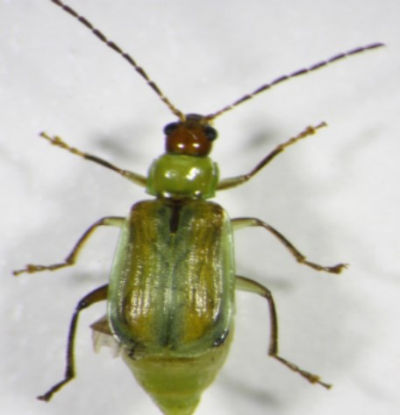
Figure 1. Mexican corn rootworm beetle.
The adult MCR is about 1/4-inch long and pale to bright green (Figure 1). Wing covers may match the body color or may have slightly contrasting yellow or orange-green stripes.
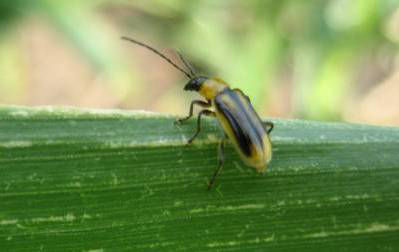
Figure 2. Western corn rootworm beetle.
The adult WCR is yellow and may have black stripes on the wings (Figure 2) or the wings may be almost completely black.
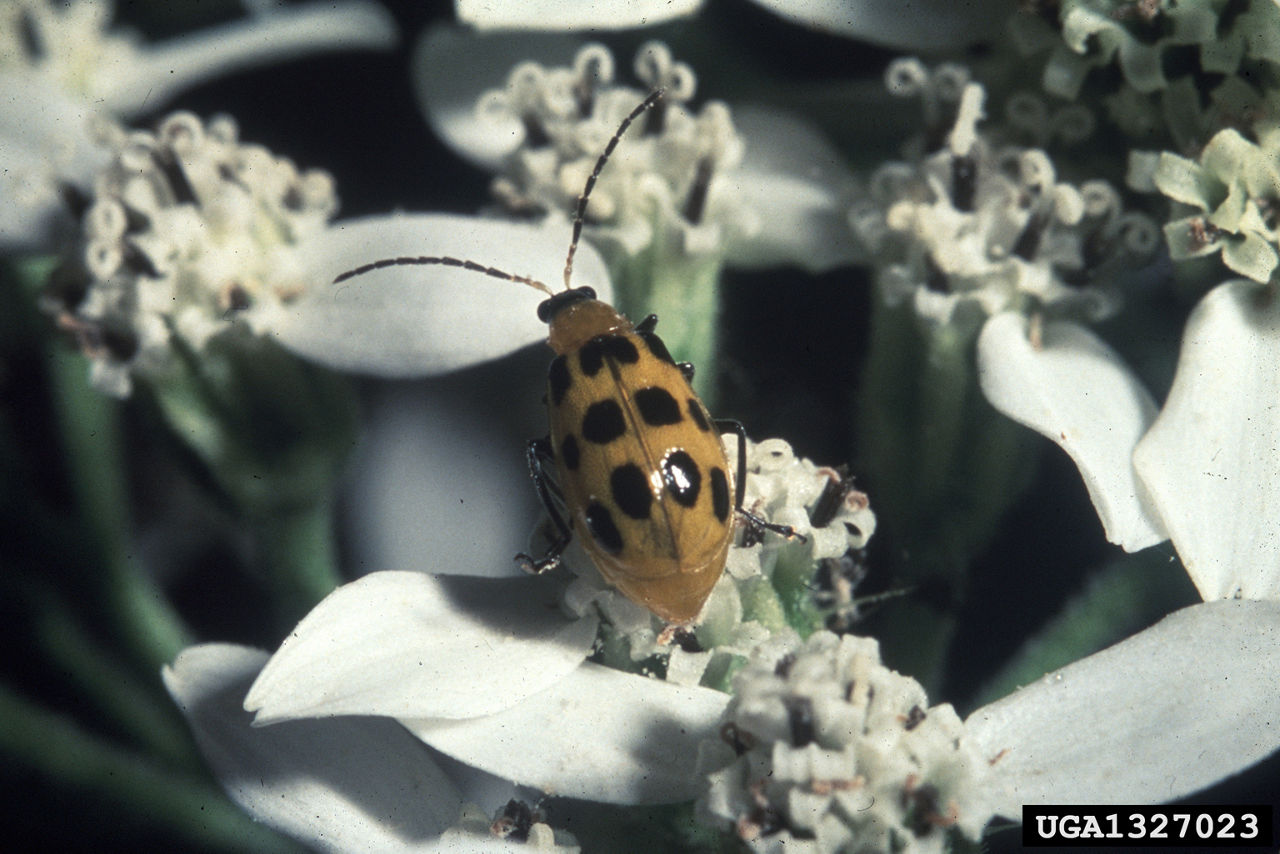
Figure 3. Southern corn rootworm beetle. Image courtesy of Alton N. Sparks, Jr., University of Georgia, Bugwood.org.
The adult SCR is about 1/4- inch long, yellow-green with a black head and antennae (Figure 3). Wing covers have 12 black spots.
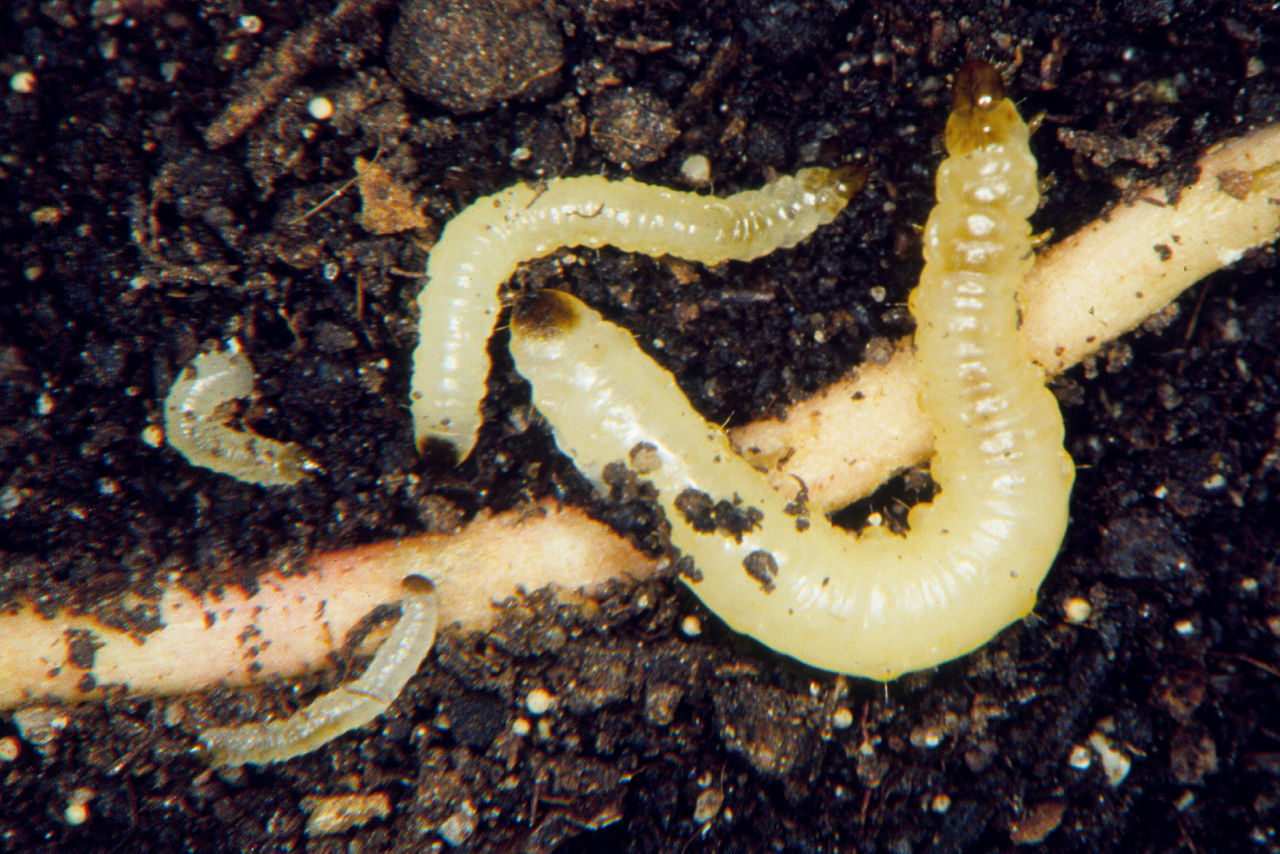
Figure 4. Rootworm larvae. Image courtesy of the University of Nebraska Entomology Department.
The larvae of all three species are cream colored and about 3/4-inch long at the final growth stage. The larvae have a brown head and brown anal plate. (Figure 4).
Biology1
The biology of Mexican corn rootworm (MCR) and western corn rootworm (WCR) are similar as both species have one generation per year and overwinter as eggs in the soil. Eggs hatch in the spring and larvae feed on roots of corn going through 3 stages or instars. In Texas, egg hatch begins in early April on the Gulf Coast and in mid-May on the High Plains, usually 3 or 4 weeks after corn is planted. Pupation occurs in the soil and adults emerge and feed on pollen and silks of corn as well as weed pollen. While adults can clip silks, the major injury is done by the larvae. Adults emerge midseason and can move from field to field. Females deposit eggs in the soil of corn fields usually beginning around silking.
The southern corn rootworm (SCR) overwinters as an adult and becomes active in the spring with warming temperatures, feeding on a wide variety of host plants including weeds and grasses. In the southern US, adults first become active about the middle of March and lay eggs in the soil in emerging corn from late April to early June. The eggs hatch in 5 to 11 days and young larvae crawl through the soil and feed on roots of corn, sorghum, or other hosts. As with the MCR and WCR, larvae develop through 3 stages or instars in 10 to 16 days before pupating and then emerging as adults in 5 to 12 days. Depending on soil temperature, development takes about 20 to 39 days.2 Unlike MCR and WCR, which have one generation per year, SCR has multiple generations.
Scouting and Management
Western and Mexican corn rootworm
Management of larval injury by sampling adults
Managing injury caused by the larval stage of the WCR and MCR begins during summer of the previous year by estimating adult density. Counting adults in corn fields, either on plants or captured on sticky traps, can provide an indication of the risk of larval damage the following year. The use of sticky traps is becoming the standard method to assess the risk of injury.
Counting Adults Using Sticky Traps in Corn2
For every 10 to 50 acres of corn, pick two corn rows separated by at least 300 ft. Each transect (or row) will contain six sticky traps. Place the first trap (Pherocon® AM unbaited) at least 150 ft from the field margin. Place the remaining traps within the same row at least 150 ft apart. Attach the trap directly above the ear, removing leaves that may get tangled in the trap. Mark the row, so it can be easily found. Place the traps at silking and count the total number of WCR and NCR every week when the trap is replaced. Determine the average number of corn rootworm adults per trap per day. For example, if a total of 100 beetles captured on 12 traps over a week would be an average of 1.2 beetles per trap per day. (100/12 = 8.3; 8.3/7 = 1.2 beetles/trap/day). If at any sampling period the number of beetles exceeds an average of 2 beetles per trap per day, a control tactic is recommended for the next growing season. The trapping period should last at least 4 weeks.
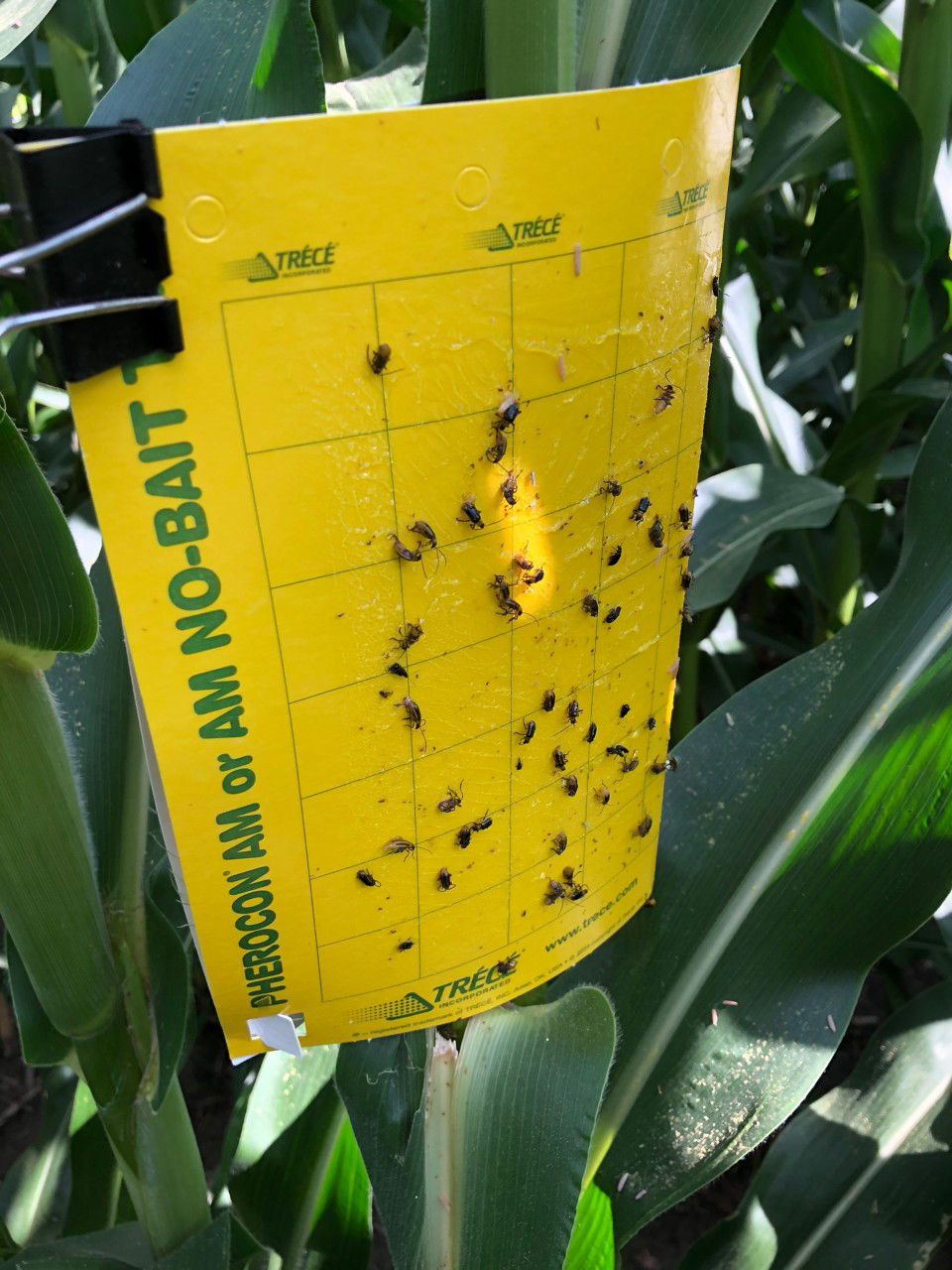
Figure 5. Pherocon® AM unbaited sticky trap used to determine corn rootworm adult density. Image courtesy of Cory Tilstra.
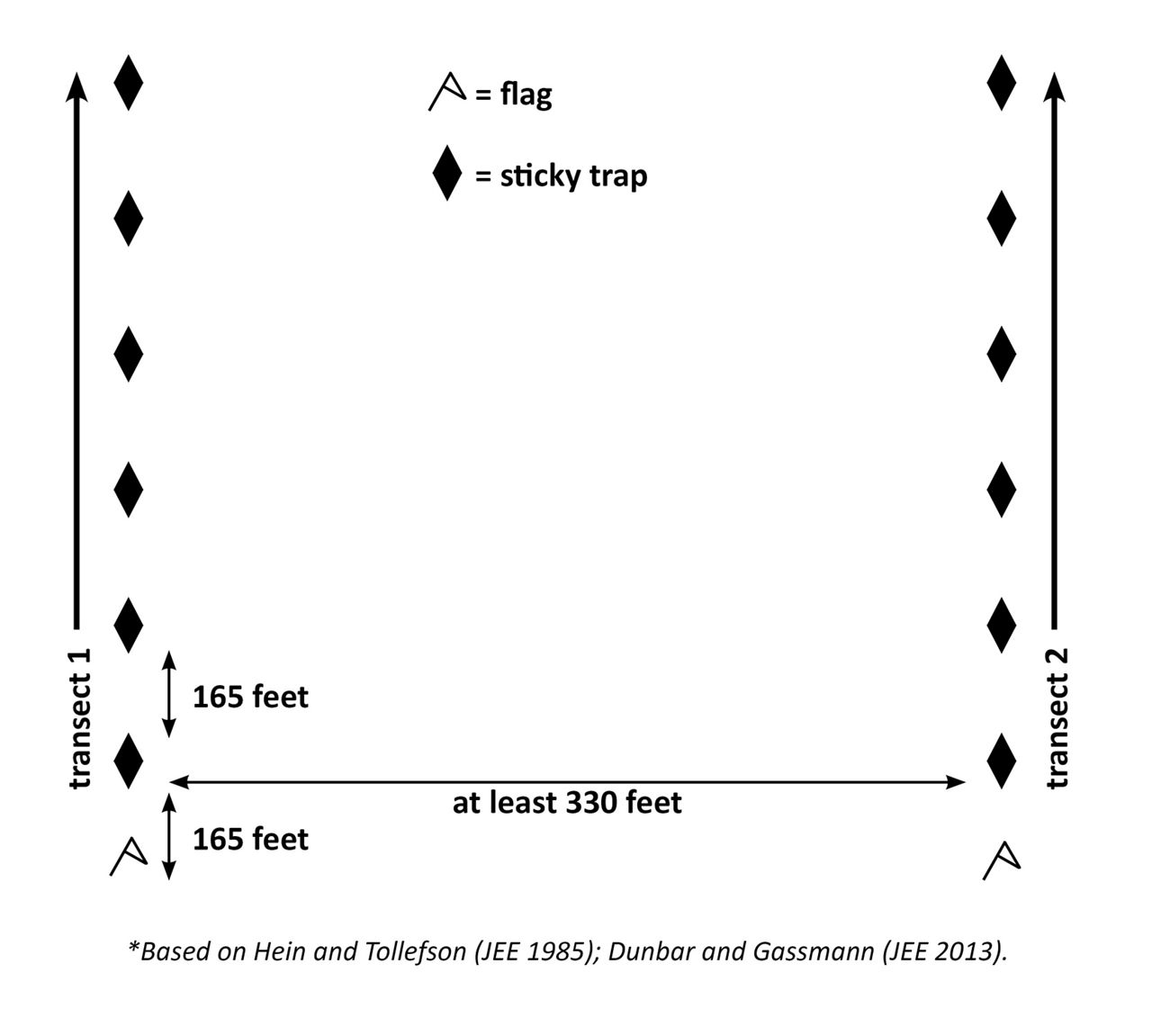
Figure 6. Sticky trap placement in field. Figure courtesy of Erin Hodgson, Iowa State University.
Management
The management tactics for the MCR and WCR include:
- Crop rotation to a non-corn crop
- Corn is the only agronomic crop in which the MCR and WCR can complete its life cycle. If adult counts exceed the threshold, rotating to a non-corn crop is the most effective known control.
- A corn product that contains a pyramided below-ground trait package
- A pyramided corn product is one that has been genetically modified to have at least 2 modes of action directed towards a single pest. In SmartStax® corn, there are two Bacillus thuringiensis (Bt) modes of action that are active against corn rootworm larvae, Cry34/35Ab1 and Cry3Bb1. In the southern US, there are two zones in regard to the use of insect control traits; the Corn-Growing Area and the Cotton-Growing Area. Each area has different refuge requirements. In the Corn-Growing Area, a blended refuge or refuge in a bag (RIB) product, such as SmartStax® RIB Complete® corn blend, meets the refuge requirement. In the Cotton-Growing Area, a structured refuge consisting of blocks or strips must be planted on 20% of the corn acreage. Consult your seed company for their requirements of their resistance management plan that is outlined in the stewardship agreement that must be signed prior to planting.
- Insecticides
- Insecticides can be applied at planting or with a lay-by application prior to egg hatch to suppress economic injury by the corn rootworm larvae. Consult your local state extension office for local recommendations.
Southern corn rootworm 1,3
Scouting for SCR should begin when corn or sorghum emerges and continue until corn is approximately 6 inches tall. Look for symptoms of water stress or dead heart. Dig several feet of row in several locations within a field and examine roots for larvae and root feeding damage.
Because SCR deposit eggs in emerging corn or sorghum, first year corn or sorghum may be just as much at risk as either crop produced continuously. The below-ground traits in corn that target the WCR and MCR are not effective against SCR. Preventative management tactics should be considered for fields that have a history of losses by SCR.
Rotate to a non-grass crop.
Early tillage, at least 30 days before planting corn, removes vegetation and discourages egg-laying.
Ensure an adequate plant population by seeding early and using higher seeding rates for the corn or sorghum product of choice.
Seed-applied insecticides may provide protection if SCR infestations are light to moderate, but soil-applied insecticides can provide control under heavy infestations.
No commercial seed products with insect trait protection are effective against SCR.
Sources:
1Porter, P and Davis, H. Managing insect and mite pests of Texas corn. Texas A & M Extension. https://extensionentomology.tamu.edu/resources/management-guides/managing-insect-and-mite-pests-of-texas-corn-2/
2Hodgson, Erin. 2016. Guidelines for Using Sticky Traps to Assess Corn Rootworm Activity. Iowa State University Extension. https://crops.extension.iastate.edu/cropnews/2016/06/guidelines-using-sticky-traps-assess-corn-rootworm-activity
3Insect Pests of Sorghum. Texas A & M University Extension. https://agrilife.org/sorghumipm/
Gill, H., Goyal, G., Gillent-Kaufman, J. 2020. Spotted cucumber beetle. University of Florida. https://entnemdept.ufl.edu/creatures/veg/bean/spotted_cucumber_beetle.htm
5001_S2
Seed Brands & Traits
Crop Protection
Disclaimer
Always read and follow pesticide label directions, insect resistance management requirements (where applicable), and grain marketing and all other stewardship practices.
©2024 Bayer Group. All rights reserved.